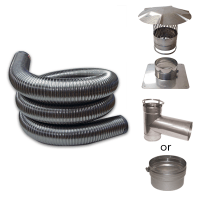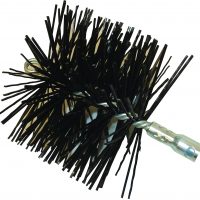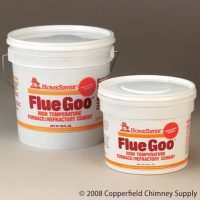Most rigid chimney liner sections are made of nonmagnetic, series 304L or series 316L stainless steel. Unlike flexible stainless steel chimney liner, rigid chimney liner pipe comes in sections and is usually round in shape and one to four feet long and five to ten inches or more in diameter. The most common wall thickness of rigid chimney liner is 24-guage (0.024 in.) stainless steel. Use 304L rigid chimney liner pipe for wood burning applications and 316L chimney liner pipe for all other fuels.
 The seam running down the length of each liner section is factory sealed. Individual chimney liner sections are joined together with the male end facing down. Stainless steel pop rivets and stainless steel screws secure the joints.
The seam running down the length of each liner section is factory sealed. Individual chimney liner sections are joined together with the male end facing down. Stainless steel pop rivets and stainless steel screws secure the joints.
Pop rivets are recommended by most manufacturers since screws may work themselves loose from the expansion and contraction of the liner. Usually rigid chimney relining jobs are supported at the bottom of the chimney or at the thimble area.
Stainless steel chimney liner tee sections are used at the thimble and clean out areas. Rigid stainless steel chimney liners can expand several inches during heating. To accommodate for this expansion the liner moves up and down in a sleeve at the top of the chimney.
A storm collar over the sleeve prevents moisture from entering the chimney along the outside of the rigid chimney liner. The area around the sleeve at the top of the chimney is sealed with either a stainless steel plate or a concrete pad.
The use of rain caps are recommended for use on chimneys with stainless steel chimney liners.
A smooth walled rigid chimney liner offers the most efficient venting due to the decreased turbulence. You can shape it to take full advantage of every cubic inch and offer maximum draft. Rigid chimney liner can be shaped into a rectangular, square, or oval.






